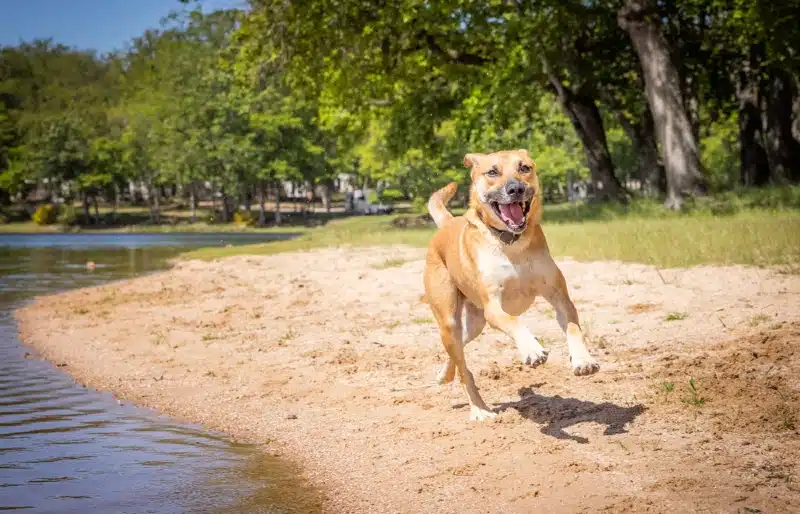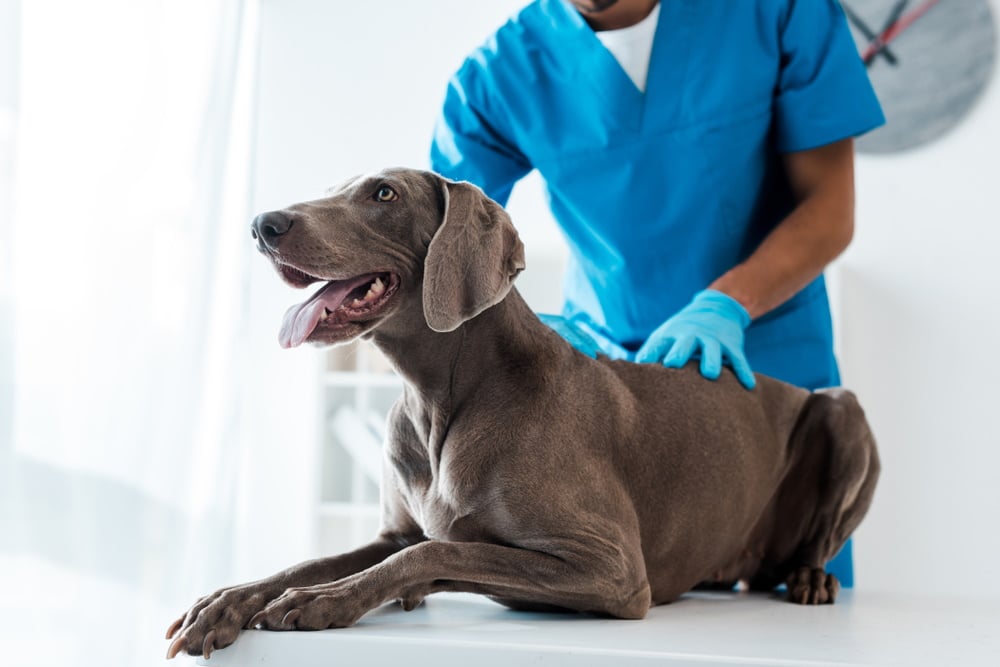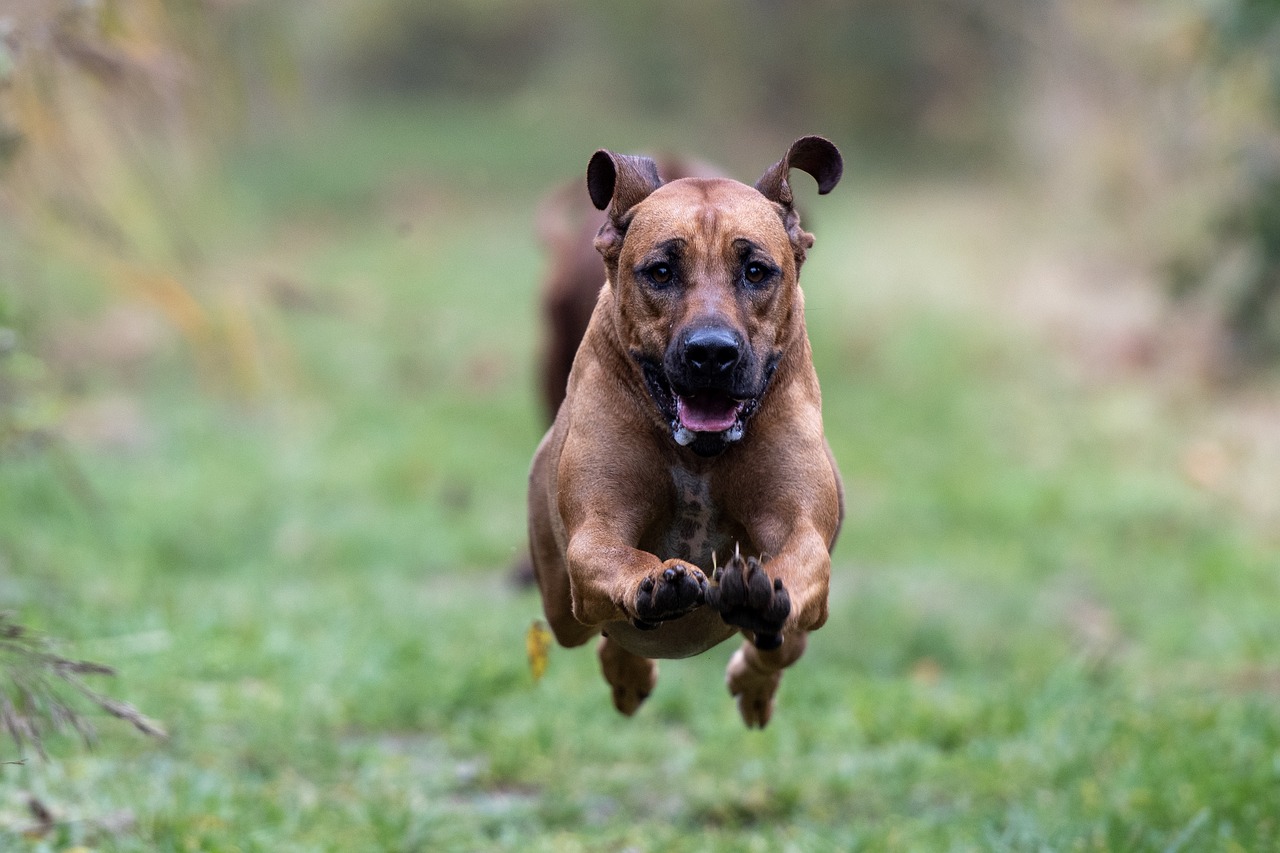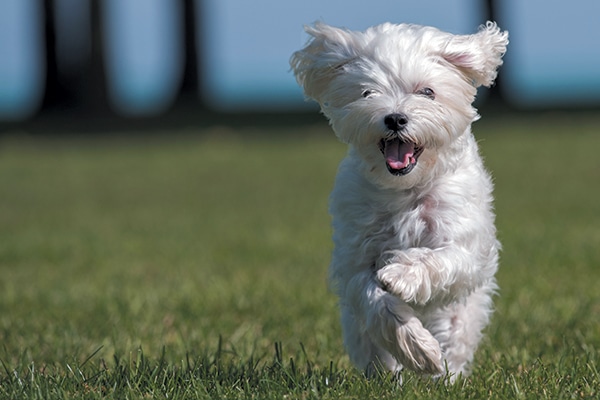Most dog owners can say that they’ve witnessed their dogs get a sudden burst of energy and start running around in a frenzy. Fortunately, they don’t usually have to worry, as this behavior is fairly common and normal in dogs. However, we can’t ignore that there are some cases in which these dog zoomies can raise concerns. Sometimes, dogs that are too bored or feeling anxious may try to release pent-up energy by zooming around the room.
Because dog zoomies may sometimes indicate an underlying issue, it’s important for dog owners to know when they should be concerned about them. Here’s what you need to know about dog zoomies and how to handle your dog when they’re running around.
What Are Dog Zoomies?
Dog zoomies refer to moments when dogs get a sudden burst of energy and start running around in circles or engaging in repetitive behavior. It’s also known as frenetic random activity periods (FRAPs). It’s a common dog behavior, and dogs of all ages and breeds can get a case of the zoomies. It’s unclear as to what exactly triggers a dog to run around suddenly, and there are many factors that may cause it.
Dog zoomies can last for a few seconds to several minutes. Dogs can have the zoomies multiple times throughout the day and will usually calm down after they expend some energy. Witnessing a case of the zoomies is pretty normal and usually doesn’t need to raise concern. However, it can become a behavioral issue if the cases are too frequent or if they become destructive. So, if you notice an uptick in dog zoomies throughout the day, it’s best to pay a little more attention and identify potential triggers.

What Are the Signs of Dog Zoomies?
The most common sign of dog zoomies is a sudden burst of energy. Your dog will typically start running around wildly and may start to spin around in circles. Dogs can also growl or grunt playfully as they run around. They might play bow and try to engage you or other dogs to run around and play with them.
It’s worth noting that dog zoomies aren’t all about excitement and playfulness. Some dogs may get the zoomies when they’re feeling stressed and need an outlet for their anxious energy. Zoomies triggered by stress may look slightly different from dogs that have zoomies because of excitement. They may be accompanied by barking or whining, and most dogs will have nervous energy about them.
What Are the Causes of Dog Zoomies?
Various factors can trigger dog zoomies. While any dog can get the case of the zoomies, it most often occurs in puppies. Puppies tend to be more energetic and playful than adult dogs and can be more easily excitable. Many dogs will start to calm down as they grow out of puppyhood and often have less frequent zoomies. Senior dogs are less likely to have dog zoomies, but it’s still possible for them to get a sudden burst of energy every once in a while.
Some dogs can get the zoomies when they’re feeling particularly excited or happy after they’ve engaged in something fun. For example, some dogs may give a final hurrah after coming home from a fun walk outside and run a few laps around the house to express their happiness. Dogs can also get zoomies after they’ve eaten their favorite food or treat.
Another common activity that triggers dog zoomies is baths. Many dogs will run around wildly after a bath for reasons unknown. Praise and attention from their parents may further encourage them to keep running around.
Dogs may also get the zoomies when they’re bored and not getting enough exercise. Dogs require daily exercise and engagement in mentally stimulating activities. If these needs aren’t met adequately, they’ll often channel their energy to more destructive outlets. They can become even more easily excitable and hyperactive, and they may have dog zoomies numerous times a day.

How Do I Care for a Dog With Zoomies
In most cases, dog zoomies are normal, and there’s no need to discourage or stop your dog from running around. Just make sure that your dog has adequate space to run around. It’s best to move any home décor or fragile items that might break if your dog accidentally bumps into them. Make sure to clear the space of any cords and wires that could potentially trip your dog.
If your dog gets zoomies frequently, it can be a sign that they need more exercise and mental stimulation. High-energy dog breeds often default to zooming around when they don’t have enough opportunities to play. They require healthy outlets to channel their energy. When they aren’t given those opportunities, they’ll often have random outbursts of energy multiple times throughout the day. They can also become disruptive and start destroying furniture or engage in excessive barking or whining.
Therefore, it’s important to ensure your dog gets enough physical exercise and playtime every day. Their daily routine should include some form of exercise, such as morning walks or going to the dog park. They’ll also benefit from playing with enrichment toys like treat dispensing toys or puzzles. High-energy dogs often enjoy engaging in dog sports, including agility courses, frisbee competitions, and dock diving. Giving your dog these types of outlets to expend their energy and be challenged can greatly reduce the frequency of dog zoomies.
If you feel that your dog’s zoomies are too frequent or destructive, it’s best to schedule a visit with your veterinarian. Your veterinarian can help determine the cause of the zoomies and can refer you to resources or treatment plans that can help your dog expend their energy through healthier outlets. You may also want to work with a dog trainer to come up with a daily routine that will ensure your dog’s mental and physical exercise needs are being met.

Frequently Asked Questions (FAQ)
Should I ignore my dog when they have dog zoomies?
If your dog is engaging in a normal bout of zoomies, you don’t have to pay much attention. Just make sure that they’re running around in a safe space that doesn’t have any obstructions that can hurt them. Participating in the excitement will only encourage your dog to continue running around and can lead them to an overexcited, uncontrollable state. So, it’s best to give your dog space to run around, and they’ll calm themselves down after a few minutes.
Can dogs bite when they have dog zoomies?
Some dogs can get so excited that they start nipping at people or other dogs. However, this type of nipping isn’t aggressive. It’s usually a means of trying to get others to join in on the fun. Because nipping is uncomfortable and can startle others, it’s best to teach your dog to have better control and awareness of their bite.
Of course, it’s nearly impossible to train your dog to learn anything when they have the zoomies. So, it’s best to teach your dog how to play gently during normal play sessions. Training your dog not to bite others can reduce the likelihood of biting when they have dog zoomies.
Are there certain times of day when dogs get zoomies?
Dogs usually get the zoomies after they get up from a moment of rest. So, you may notice your dog having zoomies in the morning or after waking up from a nap. Puppies and young dogs can also get the zoomies in the evening. Evening zoomies are usually a way for dogs to expend their last bit of energy before they get ready to go to bed and sleep through the night.

Conclusion
Overall, dog zoomies are fairly common, and they’re often a healthy way for dogs to release excited energy. However, if you notice that your dog has very frequent cases of the zoomies, make sure to pay closer attention and try to discover what’s triggering this behavior. It can also be helpful to schedule a visit to your veterinarian to see if a medical issue is causing the dog zoomies. Understanding what’s causing dog zoomies will ensure that your dog is happy and healthy and will ensure that they get help if intervention is needed.
Featured Image Credit: DavidClarine | Thinkstock.
Contents
- What Are Dog Zoomies?
- What Are the Signs of Dog Zoomies?
- What Are the Causes of Dog Zoomies?
- How Do I Care for a Dog With Zoomies
- Frequently Asked Questions (FAQ)
- Should I ignore my dog when they have dog zoomies?
- Can dogs bite when they have dog zoomies?
- Are there certain times of day when dogs get zoomies?
- Conclusion










